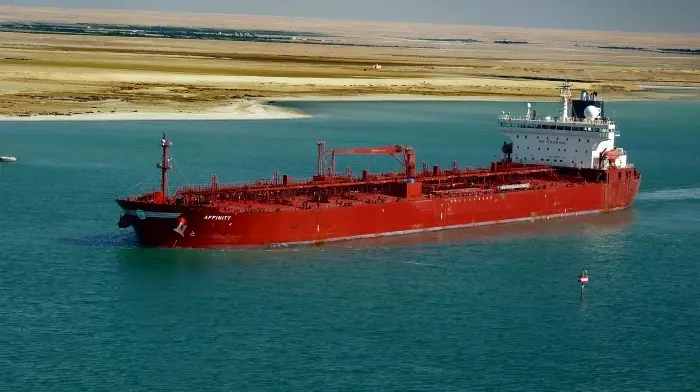Long-haul tanker shipments on the rise as US exports double

The emergence of the US crude export trade is a boon for crude tanker owners, as ton-mile distance has increased considerably. In its latest weekly report, shipbroker Gibson said that “one of the headlines in the international press in recent weeks has been the surge in US crude exports to record highs. Preliminary data from the US government agency EIA shows that the country’s crude exports hiked to nearly 2 million b/d in the week to September 29, surpassing the 1.5 million b/d record set the previous week. This latest spike in shipments is likely to be temporary; however, the bigger picture is that US crude exports have undeniably witnessed a notable step up in volumes this year relative to 2016”.
According to Gibson, “records from the IEA, the international energy watchdog, show that US crude exports averaged 0.93 million b/d during the 1st half of this year, nearly double the level over the same period in 2016. About one third of total exports was destined for Canada, while over 20% was shipped across the Atlantic to Europe. More importantly for the tanker market, long haul shipments to Asia Pacific increased rapidly, averaging over 0.3 million b/d between January and June 2017, versus just 20,000 b/d over the corresponding period in 2016. The analysis of trade flows using AIS tracking suggests that US crude exports remained at similar robust levels during the 3rd quarter of this year”.
Meanwhile, “one of the reasons behind the sudden emergence of crude trade to Asia, is the Middle East crude production cutbacks, which translated into higher values for Middle Eastern barrels relative to Atlantic Basin benchmarks. Most of the US crude is shipped to Asia on VLCCs, although there is still plenty of Suezmax trade as well. Economies of scale dictate that VLCC shipments should be more practical; however, all VLCC loadings involve reverse lightering, which is expensive and can add up to 15-25% to the overall cost of freight to Asia. This situation is likely to change in the future, with at least two major ports in the US Gulf considering plans to accommodate VLCCs at their loading berths. In May 2017, an empty VLCC was successfully docked at the Corpus Christi export terminal. A few months later the port authority announced a dredging project for deepening the Corpus Christi ship channel to 54 feet, which in theory will allow the passage of a partloaded VLCC. Occidental Petroleum also plans to complete by late 2018 a project to install multiple loading arms at its Ingleside Energy Center facility at Corpus Christi to load VLCCs on a regular basis. The Louisiana Offshore Oil Port (LOOP) has a similar ambition, announcing in July 2017 that it is seeking shippers who would like to use its existing import terminal to export crude. The port’s authority states that the facility would require only minor modifications to ship oil bi-directionally and that the loading service could become available in early 2018”, said the shipbroker.
Gibson added that “although the eventual phase out of self-imposed production cuts in the Middle East is likely to affect the arbitrage negatively, the infrastructure improvements in the US to support direct VLCC loadings could help to offset that. Nonetheless, for US exports to continue to rise, the oil industry needs to see further robust gains in the US crude production. The country’s output is on track to increase by 0.4 million b/d this year but will production continue its rapid ascent in 2018 and beyond?”, Gibson concluded.
Meanwhile, in the crude tanker market this week, Gibson said that in the Middle East, “Chinese VLCC demand continued a-pace to close out October fixing upon an upbeat and upward footing, that is now spilling over into the fresh November programme too. Rates incrementally gained through the week to end in the low ws 70’s to the East and high ws 20’s to the West and if the momentum is maintained then further progress is possible. A slight counter to that is that older units remain in numbers and will continue to keep the bottom end of the range at a long arm’s length. Suezmaxes plodded onwards, but then saw a little more late week activity to steady rates at around ws 80 East and ws 37.5 to the West with reasonable premiums still payable for Iran loadings. Aframaxes remained broadly at last week’s improved 80,000mt by ws 120/125 levels to Singapore upon steady, sometimes stronger, demand and that should remain the case over the near term, at least”, the shipbroker concluced.















![AIRBUS A380 [MORE THAN 600 PASSENGER’S CAPACITY PLANE]](https://cdn.tinn.ir/thumbnail/4jCp4EQvCU0b/IjHVrSYQrIAqIzXuTzADR7qLYX4idQT4nfq__26E5SCUPLMqfhWkWajvuO9Wfq1ql1TjV4dhkrHliNQU82kMpo2NNftT_NGEwHc9KXtN_rk731bmifa2IQ,,/airbus-a380-structure1.jpg)

Send Comment